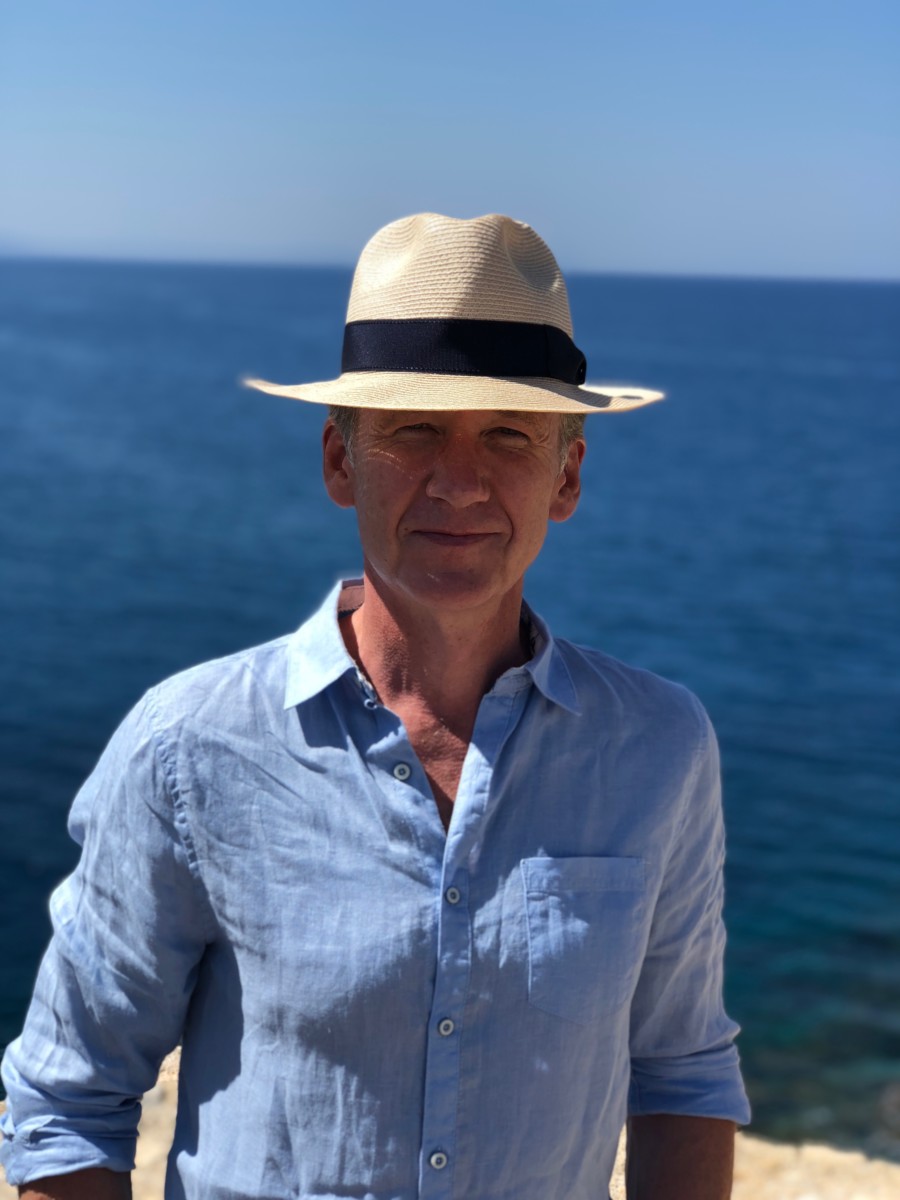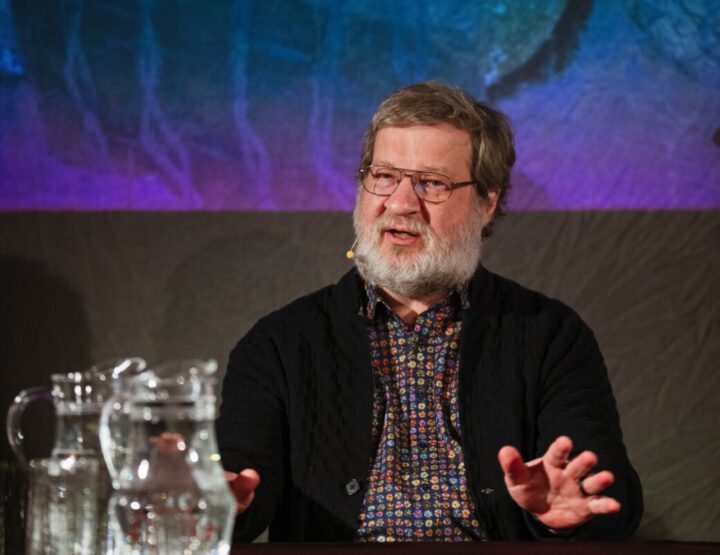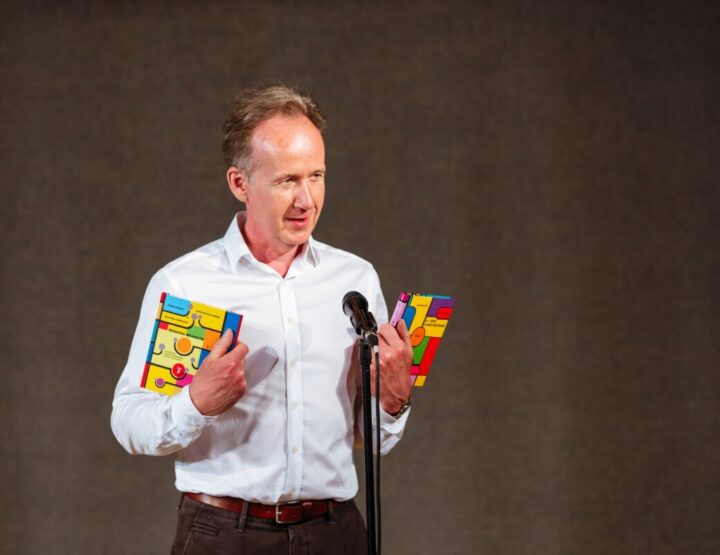Places of writing can be divided into two: those where writing is possible in general, and those that have a direct connection to the subject matter and should be encountered firsthand. For the contemporary author, the opportunity to focus in an agreeable spatial locale, even if it is one’s home library, is more of a luxury. In my years as a public servant, I developed the ability to write anywhere: in a hotel, airport, airplane, café, subway station, conference room, etc. This, however, was accompanied by a demanding attitude towards writing implements: fountain pens that could withstand changes in air pressure and a variety of notebooks (some have a refined appearance but are utterly useless in a lurching subway car).
Sir Arthur Conan Doyle had his character Sherlock Holmes draft a study of different cigar ashes. I believe I’d be capable of putting together a similar treatise of old-school writing implements. And here, in the contact between my poesy, paper, and fountain pen, lies something sensual – in the sensation of the pen tip sliding across paper without interruption, i.e. without lifting the hand for the next keystroke. I’ve discovered that writing done in this manner, which at first seems entirely spontaneous and even chaotic (“the hand writes of what the mind does not yet know”), is an unexpected treasure. It is unnecessary and, often, even impossible to edit such writing, the sentences having their own unique rhythm for which there is no rationale to alter. Tucking my notebook and fountain pen into my coat pocket, I feel myself a free man. Incessantly toting a laptop around committed me to something akin to slavery. For quite a while, I never took a laptop with me on business trips, trying to make do with my telephone and notebook.
Another significant discovery was that it’s easier to write in scenes, or even frames, while on the move. Stacking a heftier work’s house of cards every morning was simply not possible. The day could indeed have started or ended with writing, but no bridge formed between them. My desk drawer is filled with snippets scribbled onto the backs of meeting agendas, concert programs, and other random scraps of paper. They are distinctive proof of the serving of two or even more gods, in which there is nothing wrong, so long as one’s resolve and curiosity persist. Characters and plots can be thought up or developed based on what one is currently reading, but when life itself delivers them, it is a treasure of its own. Especially when writing about earlier history, where an upstanding man of the cloth and someone who would today be regarded as a war criminal can exist side-by-side within the same individual. There are places in the world where these 11th-century characters still decide people’s fates today. They are, to be more precise, universal characters – only their outer aspect changes. The same is true with settings: a landscape may change, but not the memory branded into the environment. A strange constancy manifests in this memory; often, it’s so identical that one doubts whether the notion of anachronism is even valid.
The concert hall is one of the most ideal of writing places. Music inherently possesses the virtue of organizing one’s thoughts, but when you listen to a perfectly-composed piece, then plot lines of a written work can evolve unexpectedly. Oftentimes, they don’t even need to be written down – they crystallize in your memory all on their own. In this sense, the parallels the Estonian classic Karl Ristikivi drew between the novel, architecture, and The Art of Fugue most certainly hold true, even if the outcome is not a cathedral, but a much more modest structure. And unlike in the case of word-based performances, it’s possible to simply go along with average or even bad music, dismissing it to mere background noise.
Moving on to specific places, Damascus is undoubtedly one site of exceptional significance. I went there in the spring of 2011, when gunfire was already being exchanged in the suburbs and foreigners had evacuated or were in the process of doing so. It gave the “Venice of the Mediterranean” a very unusual undertone. But no less important was the fact that I discovered in Damascus the ancient Antioch, which I had been attempting, unsuccessfully, to recreate for quite a long time already. Standing before my eyes were the respective descriptions of Hermann Broch and the Estonian writer Leo Metsar, to which not much could be added. Nothing at all, in fact. The Antioch of the Normans was dead and had been paved over by order of Atatürk: neither the chronicles nor pilgrims’ accounts could help. Arriving in Damascus, it was obvious the city was filled with early-medieval buildings. What’s more, a unique trait of Middle Eastern cities is that if warfare has not wrought utter destruction, then buildings are reconstructed according to their original floor plans. Cities in the region resemble plants that may be cut or uprooted but will more or less sprout identical to the way they once were.
Exploring Damascus, I realized that the city’s historical aspect is not principal; that the pith of the urban space is found within something else. It’s the medley of evening light, the unexpectedly cool and moist breeze that arrives at sunset and eddies along the cobblestone streets, the scent of dust and spices, the calls to evening and morning prayers. The faded facades, and the tidy inner courtyards. Suspended above it all was some kind of tension or disquiet. As one local silver merchant explained in a bazaar: “There is war in the air, I feel it…” He wasn’t mistaken: a couple weeks later, intense gunfire broke out. One of those notebooks lying around in a drawer somewhere right now is filled with my sketches and impressions. And later, I used it all to write medieval Antioch, my personal interpretation.
Something similar happened in Kiev in early March 2014: the “revolution”, as it was called at the time, had concluded and Maidan was still smoking. The city had returned to its ordinary rhythm, but the unease of war could still be felt in the air. Estonia’s embassy was pleasantly calm compared with other analogous institutions. An important part in this might have been played by the ambassador himself, who realized that the “little green men” might not make it any farther than Donetsk, that Ukrainians would resist, and that Ukraine itself had enough strategic depth to not be overrun in a couple of weeks. I’d recently begun writing a play titled The Year of Wonders, one character of which is a former soldier of the Estonian Narva Battalion who fought in Ukraine in 1943. In order to understand that man (or, rather, that boy), I’d been reading historical wartime texts and later memoirs. As a result, this became a kind of backdrop to Ukraine in 2014. Winding through much of the writing was the Dnieper, the breadth of which had astounded Estonians fighting in early-20th-century Ukraine. And when I personally became acquainted with the waterway, I realized it truly is immense; something much more than a river in the Estonian understanding. In one weekend, I penned the majority of the play in the President Hotel lobby bar in Kiev, and to this day, I am deeply grateful to the waitresses who politely cleared away my empty coffee mugs and served me lunch- and dinnertime pelmeni. The Dnieper made it into the play. For one dialogue, the director Madis Kalmet had the male and female protagonists stand at opposite ends of the stage, and the breadth of the river became the distance separating the two; a symbol of the impossibility of their love. I might add that I’d never spoken a word of impressions to Kalmet – he grasped them all on his own.
It’s possible that what differentiates ideal places of writing from ordinary ones (and these places are impossible to identify beforehand, I might add) is some kind of an understanding or recognition, through which one can accomplish several weeks’ work over the period of just a couple of hours or even a couple of minutes. The National Library of Latvia in Riga was one such encounter for me. I visited to view an exhibition about Martin Luther and translations of the Bible. At the time, I was writing a short story about Adrian Virginius, who co-authored the first translation of the Bible into South Estonian. The exhibition was very well-organized and educational, but didn’t leave a deep impression. In an adjoining hall, I discovered another exhibition on early manuscripts. Projected onto a wall were letters that sometimes grouped together, only to break apart again. They crumbled, to be exact. I reckoned that Virginius, ever seeking the perfect translation, might have had a similar vision in the moment before his execution. I went somewhere – I don’t remember if it was the library café or simply the foyer – and wrote that scene of the story. In retrospect, a place I cannot even recall was one of the best places of writing I’ve experienced.
Tiit Aleksejev is an author, historian, and Chairman of the Estonian Writers’ Union.




